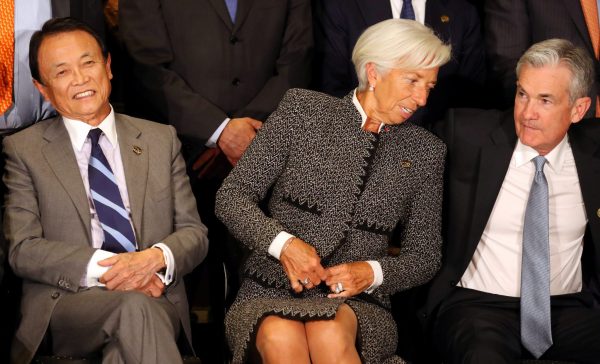Since that report was published, turbulence, volatility and crises have dominated the economic landscape. Argentina is in crisis. Turkey is not far off. Markets have been rattled in Indonesia, Myanmar, Italy and Spain as financial conditions tighten. The fallout from Brexit is more uncertain than ever. Populist politicians continue their rise. The trade war between the United States and China has escalated at an alarming rate. The clock is ticking before the WTO dispute settlement appellate body shuts-down. China’s financial system remains precarious. The United States faces bitterly contested Congressional and Presidential elections with macroeconomic policies that are at odds with the direction of the economy. Geopolitical tensions remain high with Iran, North Korea and Russia.
With all these risks, now is a good time to think about Asia’s capacity to respond to economic crises. It’s appropriate to be exploring this issue this year. It is the 10-year anniversary of the collapse of Lehman Brothers. Just last year, we marked the 20-year anniversary of the Asian financial crisis. Should Asia plunge into another crisis, would we be ready?
The latest edition of East Asia Forum Quarterly (EAFQ), launched today, seeks to answer that question. The news is not good.
There are major risks facing the region and its economies. With trade wars, financial turmoil, institutional weakness, rising populism, territorial disputes and geopolitical tensions there is plenty of risk to go around.
EAFQ assesses the capacity of global institutions, like the IMF, to respond in different crisis scenarios. The resources of the IMF have been increased substantially since the global financial crisis. But with more countries calling on those resources, have they been increased by enough? Are the IMF’s lending facilities flexible enough? Will countries go to the IMF if they get into trouble? Or does the IMF’s reputation since the Asian financial crisis haunt it still?
Since the Asian financial crisis, a plethora of regional financing mechanisms have been developed, particularly in Asia. What role should these institutions, such as the Chiang Mai Initiative Multilateralization, play in supporting stability. Are these regional financing mechanisms competitors or complements to the IMF? How would they work together in a crisis, given they are untested?
One line of defence against crisis is bilateral currency swap lines. Swap lines with the US Federal Reserve, some of which still exist today, were integral taking the pressure off during the global financial crisis. China has since created its own swap lines worth almost half a trillion dollars. Are these swap lines part of the safety net? Do central banks agree on whether they be available in times of crisis? How do they relate to the IMF, regional mechanisms and development banks?
Much can be done domestically to strengthen the resilience of Asia’s economies and financial systems. Economies need to take steps to prevent themselves from having to access the safety net in the first place. What role can regional arrangements like APEC play in this process?
In this week’s lead essay, Edwin Truman has a blunt warning: ‘Neither Asia nor the global financial safety net is ready for the next crisis’. Truman suggests three reasons for this.
There is a lack of consensus about the purpose of the safety net and the place of the regional mechanisms within it. US Treasury Secretary Steve Mnuchin recently stated that the IMF’s resources were adequate. The problem with his statement, warns Truman, is that the adequacy of the IMF cannot be assessed outside of a crisis.
Threats to the size of the resources of the IMF are emerging. In 2020, the bilateral loans that were extended to the IMF will begin to expire. In 2022, the IMF’s New Arrangements to Borrow will begin to expire, as well. The worst-case scenario is that the IMF loses half of its funding, greatly threatening its ability to respond to crises.
Truman finally warns that the mechanisms to manage the safety net are not agreed. Even if adequate IMF financial resources were assured, a consensus on how to manage them in support of the safety net as a liquidity support mechanism has not been established. Worries about moral hazard prevent the IMF from providing resources at the necessary scale while central banks require, at a minimum, that the IMF has both sufficient resources and the policy clout for them to get involved.
In short, neither Asia nor the global financial safety net is prepared for the next crisis. The message to policymakers is clear: now is the time to strengthen the global financial safety net. As the saying goes: ‘the best time to plant a tree is 20 years ago. The second-best time is now’. The same is true in preparing for economic crises.
The EAF Editorial Board is located in the Crawford School of Public Policy, College of Asia and the Pacific, The Australian National University.

